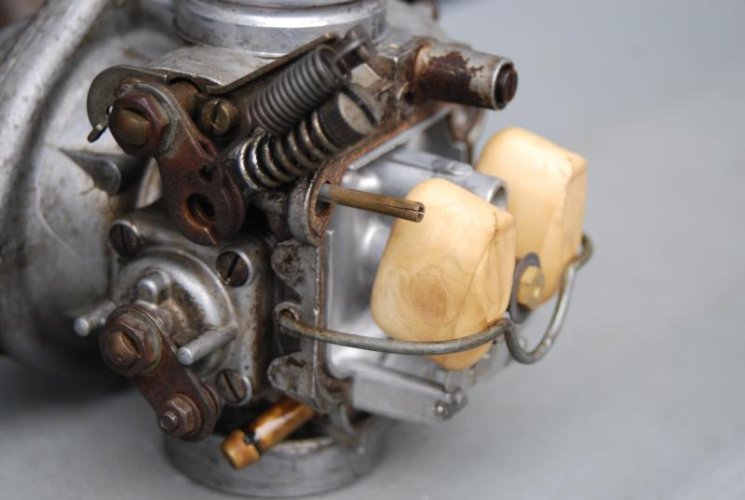I have a new-to-me 1974 R75/6 and I'm currently in the process of taking it apart to do the rear main seal.
Took the CV 64/32 carbs off this weekend- I will be cleaning and re-building them as well- and finally got a good look at them now that they're off the bike.
This is what I found:

the brass tube, that comes down from the main body, below the throttle assembly, into the bowl- is split
what the heck?!?
so what do I do about this? send it to Bing to repair?
And how the heck did somebody do that to it in the first place?
thanks for the help-
Kat
Took the CV 64/32 carbs off this weekend- I will be cleaning and re-building them as well- and finally got a good look at them now that they're off the bike.
This is what I found:

the brass tube, that comes down from the main body, below the throttle assembly, into the bowl- is split
what the heck?!?
so what do I do about this? send it to Bing to repair?
And how the heck did somebody do that to it in the first place?
thanks for the help-
Kat
